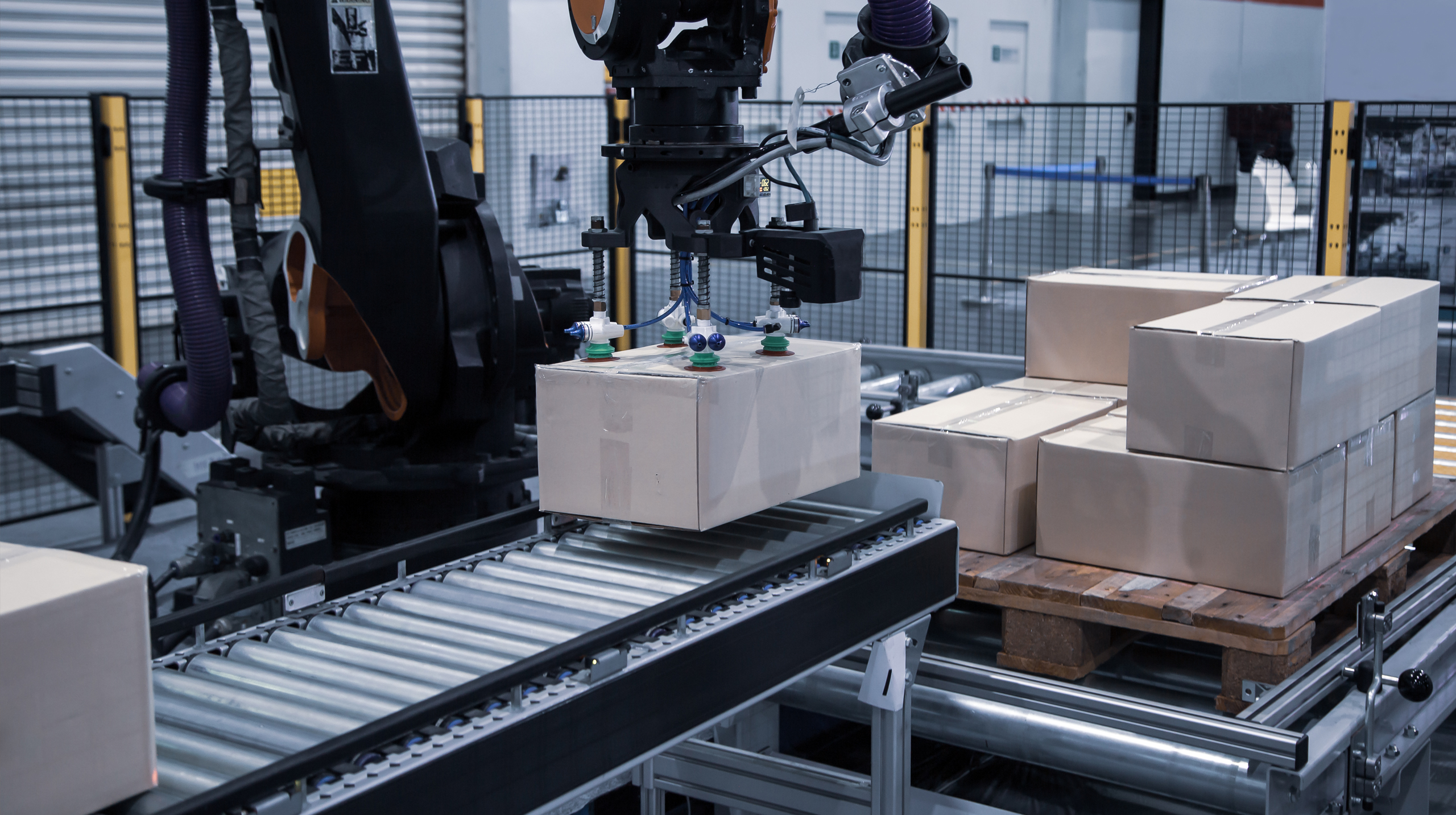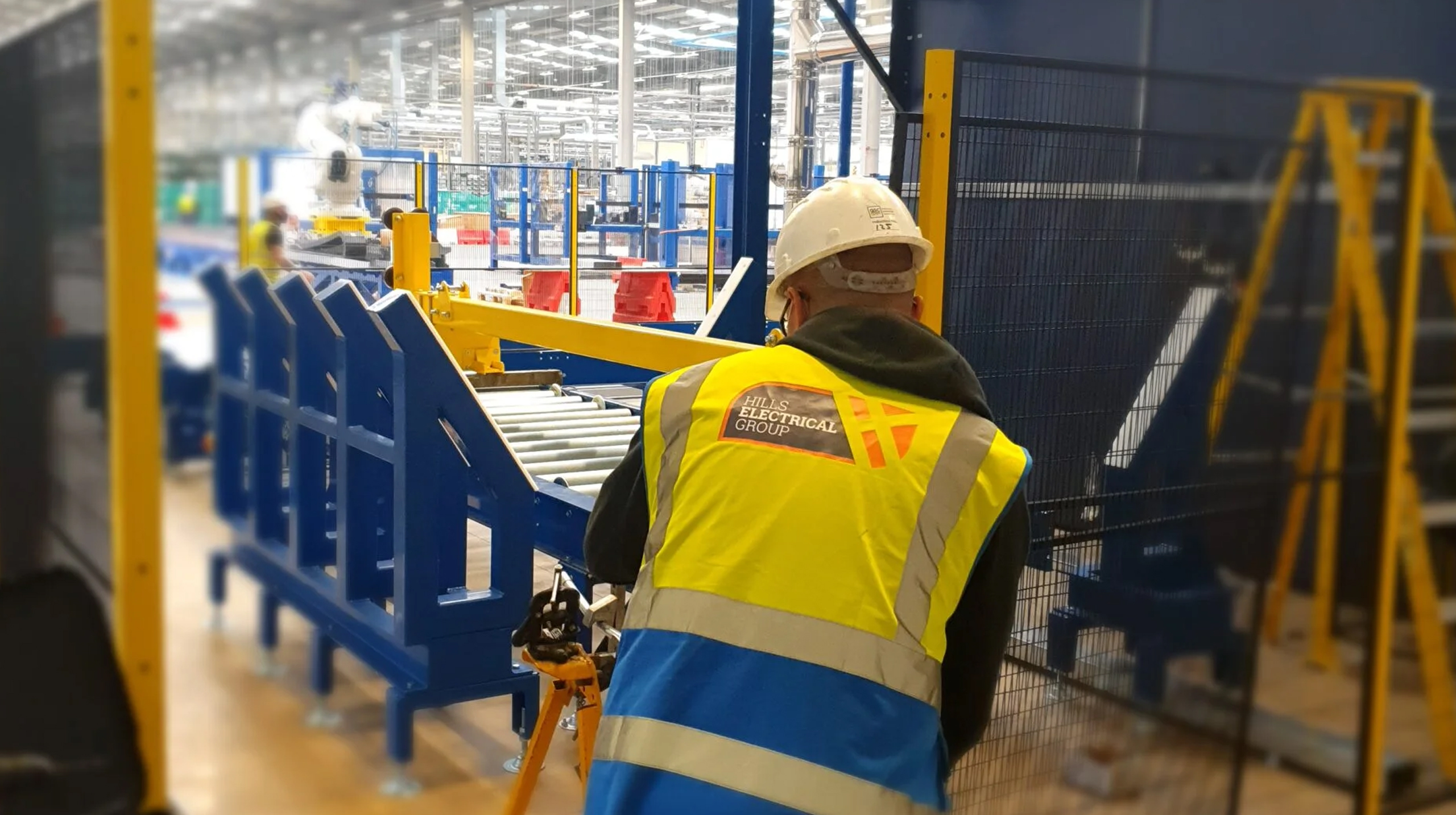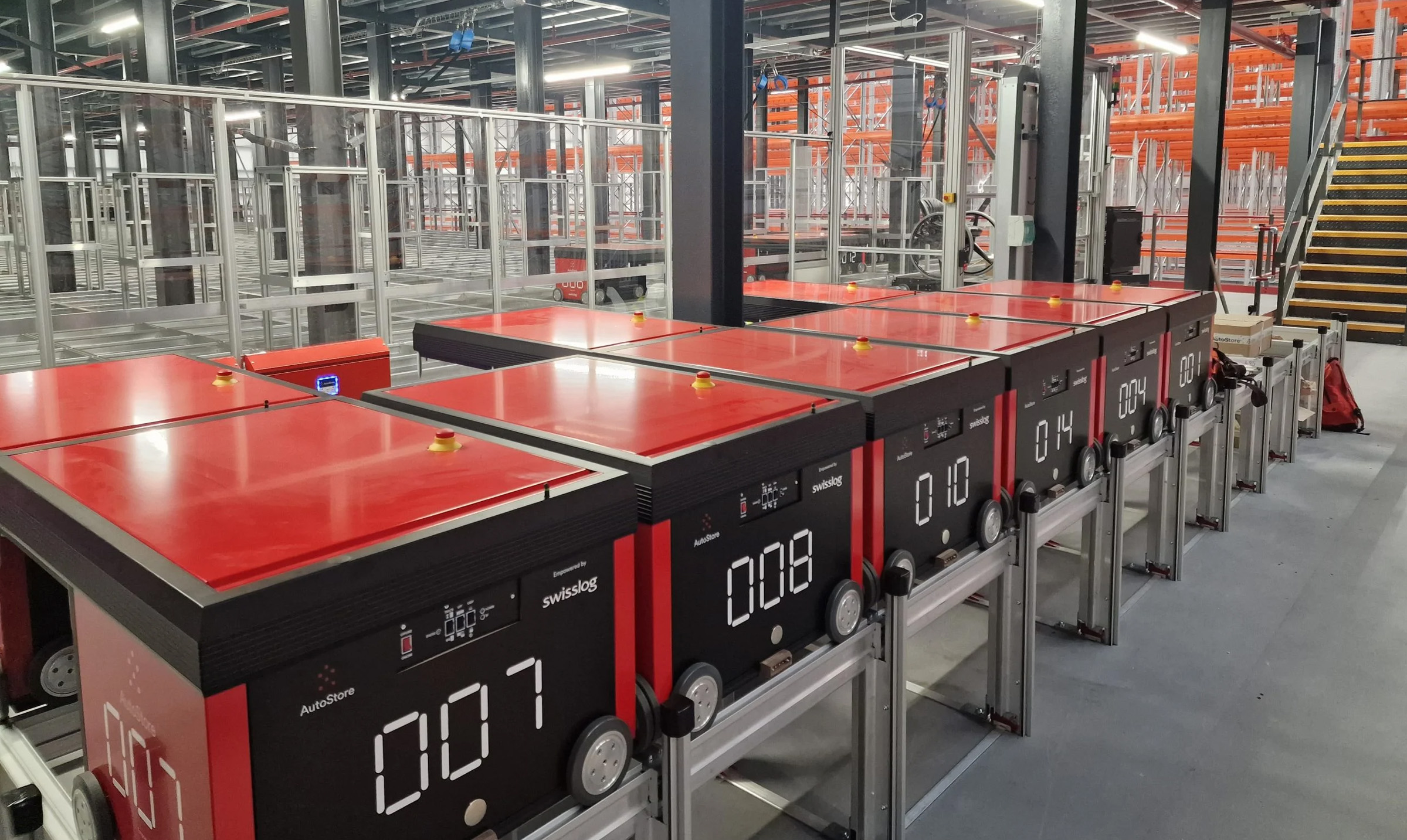We Are Now Autostore Installation Certified
Speak to a member of our team
Get in TouchSynonymous with automated large-scale mechanical operations, conveyor systems have become a staple of modern industry since their invention in 1892 by Thomas Robins, who first designed the heavy-duty conveyor belt we recognise today.
Over two centuries later, conveyor systems continue supporting and enhancing various sectors, such as manufacturing, production, and processing.
But what is a conveyor system, and how does it work? Let’s get rolling.
A conveyor system is a form of machinery that moves products, materials, or items to different locations within a localised area.
Often found in warehouses, factories and other operational facilities, conveyor systems come in different designs, shapes, and sizes. The installation can include various locations depending on the transportation or sortation requirements.
The basic role of conveyor systems is to improve operations by helping speed up processes and generate higher productivity within operational environments. These aspects can include transportation, sortation and accumulation.
Conveyor systems can serve multiple purposes for numerous industries. Some common sectors that utilise conveyor systems include:
With a global market value of $5.42 billion in 2021, with projections to reach $7.76 billion in 2029, the conveyor system industry continues to prosper through demand in handling large volumes of goods in manufacturing and warehouse facilities.
The components involved in most basic conveyor systems will include the following:
However, conveyor systems are often custom-made and can have multiple features that meet the necessary operational requirements. This innovation is crucial for businesses hoping to invest in the most reliable, efficient, and cost-effective conveyor system specific to their environment and incentives.
More recently, conveyor systems have become particularly advanced with energy efficiency, optimised motor controls and robotic components. But returning to its essential function, conveyor systems help remove any need for manual transportation, saving time and effort while avoiding physical lifting injuries.
With one in three accidents at work caused by manual handling, conveyor systems can significantly reduce potential injury risks, especially when heavier items require multiple workers to lift, transport and place.
Traditional conveyor systems contain a belt or rollers upon a pulley system that rotates, moving the conveyor bed from one end to another in a perpetual motion that runs up, under and around. Therefore, materials get placed on the conveyor bed before easy transportation to another location further down the line.
Conveyor systems can be powered manually, with gravity or a motor. You can expect most modern conveyor systems to be advanced enough to be powered electronically.
So, through this combination of mechanical components and energy source, the conveyor pulley gets powered to rotate the belt that shifts the surface along the system. Items are then placed along the pre-determined path to arrive at their chosen destination.
Conveyor systems can be designed with sortation features that identify and locate items and take them to specific locations. For example, recycling conveyor systems can have sophisticated technology to locate specific material groups alongside product quality control that checks if products placed on the system meet the correct criteria.
Now we’ve covered how conveyor systems can move high volumes of goods from one place to another safely and efficiently. What are the other benefits you can expect?
1. Speed
Transport your products, materials, or items faster from one location to another along the conveyor system.
2. Cost Savings
Increasing productivity and minimising labour will result in overall cost savings for your business.
3. Minimise Accidents
Removing the reliance on manual labour will help reduce accidents and injuries at work.
4. More Control
A conveyor system provides more control and management over your operations.
5. Adaptability
You can upgrade conveyor systems with additional features such as PLC Programming and robotics that help further streamline your operations.
Conveyor systems come in various forms and sizes, depending on the operational requirements.
From your basic belt conveyors to advanced robotic sortation solutions, conveyor systems come customised to optimise working operations across efficiency, safety and cost. Here are some conveyor systems varying in size, design, and processing purpose:
Floor conveyors, otherwise known as “floor-mounted conveyors”, are anchored to the ground and connect components across material handling lines.
Floor conveyor systems aim to transform operation productivity by keeping goods travelling on ground level.
Overhead conveyor systems help maximise floor space by working above ground level. Positioning a conveyor higher in your facility means the system will evade any on-floor obstacles.
Most overhead conveyors operate with a chain mechanism and are a popular material handling solution for sectors that process machinery, textiles, and packaging.
Designed with its distinctive, rotating vertical shape, screw conveyors are often used in agriculture to transport water, waste, powders, and grains.
Ideal for outside operations or within smaller factories and warehouses, screw conveyors can work on an incline and are unlimited by horizontal or vertical boundaries.
Known in the conveyor world as the ultimate space-safer, spiral conveyors can work with a compact design that connects ground-level and above-ground-level systems.
Popular in the manufacturing and e-commerce industries, standard spiral conveyor systems are ideal for handling and transporting fragile items of varying sizes.
In revolutionising the conveyor system industry, robotics conveyors are setting new standards of what’s possible for automated mechanical material handling.
State-of-the-art robotics conveyors can handle various production requirements across numerous operational environments.
At Hills Electrical, we continue to provide cutting-edge, customised conveyor systems, proven to optimise efficiency, improve safety and generate a healthy, long-term ROI.
We’ve designed and installed our bespoke automated conveyor system solutions for big brands like Movianto, CEF, and Triumph. With our skills, knowledge and experience in electrical engineering, there is no limitation to the imagination of your conveyor system solution.
So, for more details on how we can provide you with the perfect conveyor system, get in touch today and receive your free assessment.




Feel free to fill out our form below and a member of our team will be in touch.